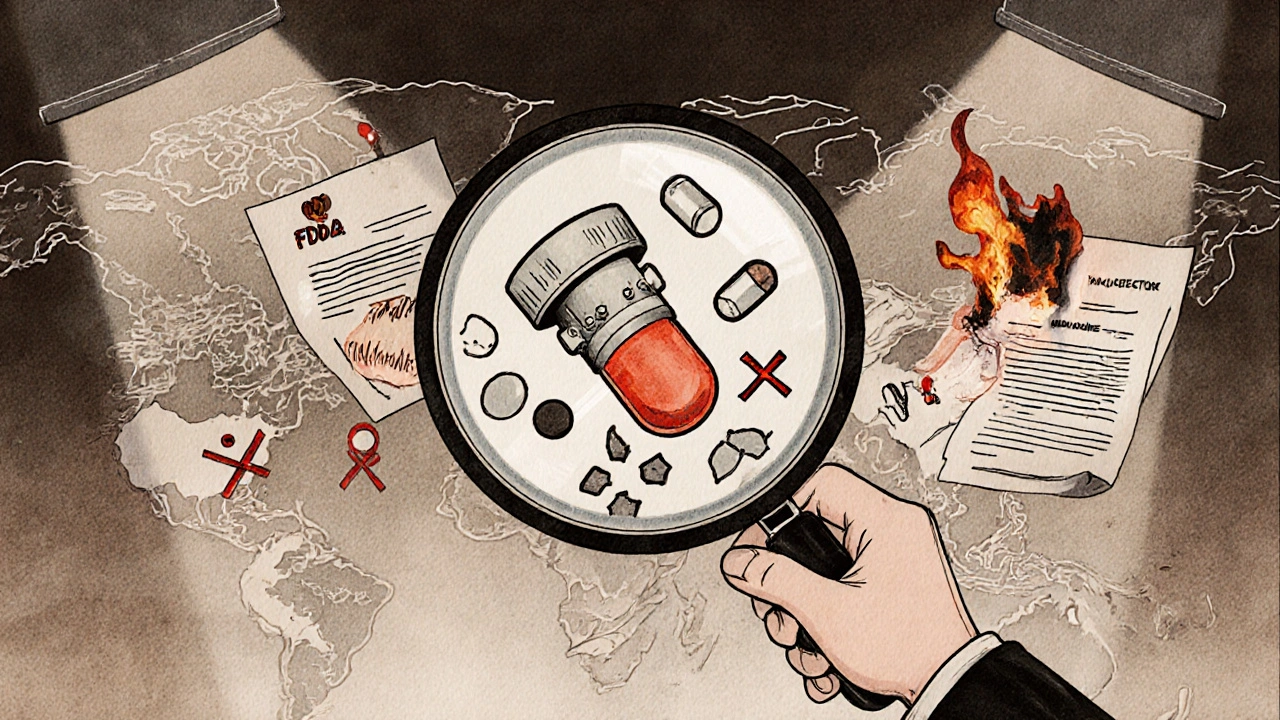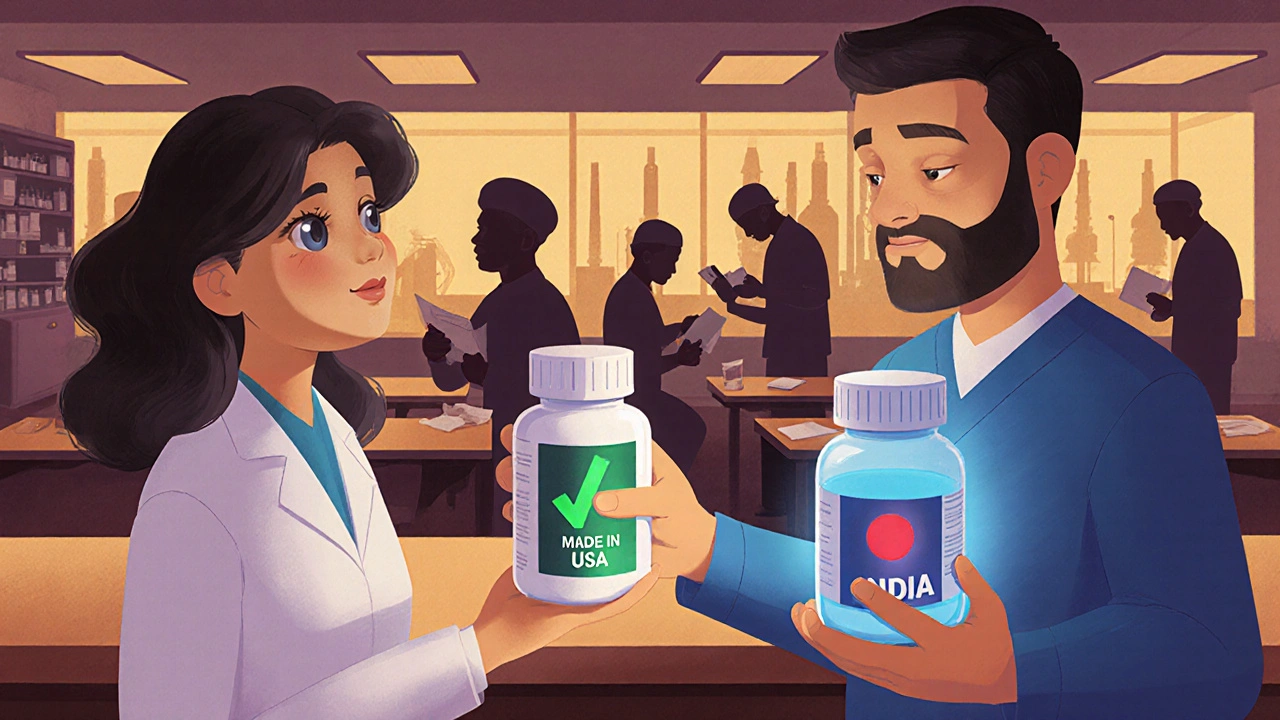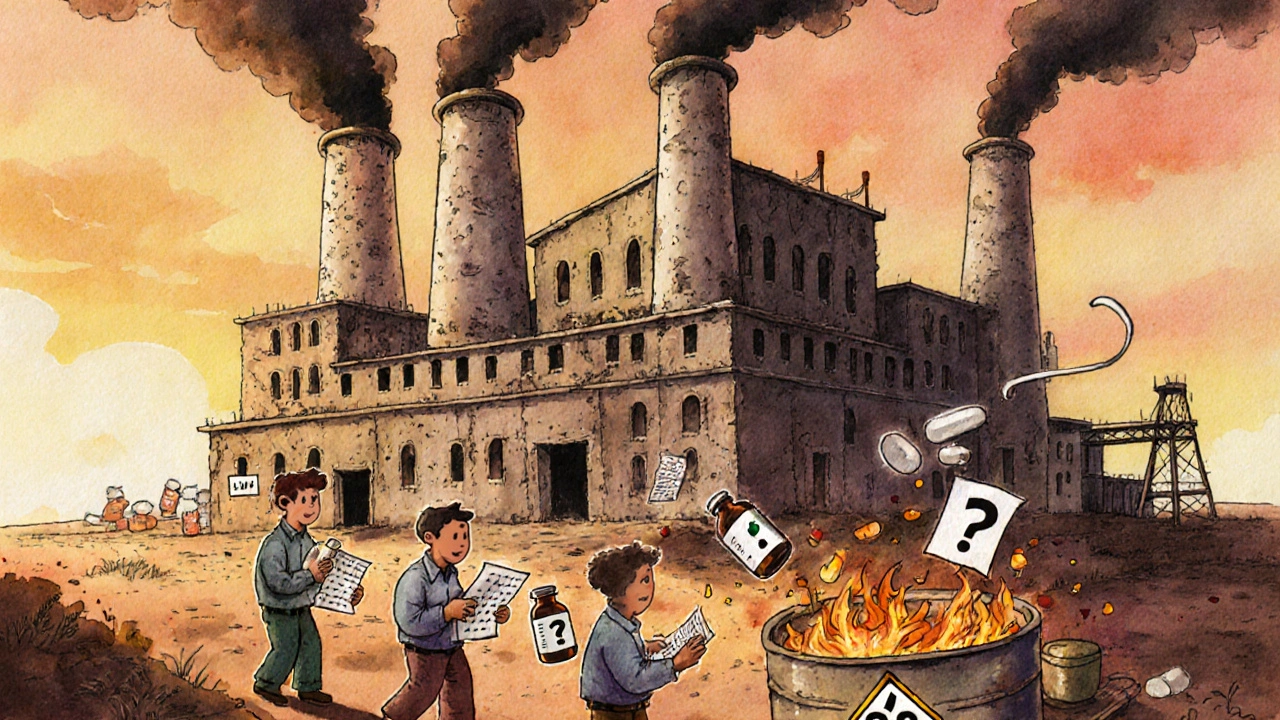When you pick up a generic pill at the pharmacy, you expect it to work just like the brand-name version. But what if it doesn’t? Behind the scenes, manufacturing plants around the world are struggling with quality problems that can make these drugs unsafe, ineffective, or even dangerous. This isn’t theoretical. In 2018, the FDA found cancer-causing impurities in blood pressure meds like valsartan-linked to factories in China and India-and pulled over 28 versions off the market. Millions of patients were affected. Since then, the pattern hasn’t changed. The real issue isn’t just bad actors-it’s a broken system.
What Goes Wrong Inside These Factories?
Generic drug manufacturers are under intense pressure to cut costs. That pressure shows up in the details. A single batch of medicine can fail because of something as small as a dirty machine, a skipped test, or a worker not logging data properly. The FDA calls these failures cGMP violations-short for Current Good Manufacturing Practices. These aren’t suggestions. They’re legal requirements designed to make sure every pill has the right dose, dissolves the right way, and stays stable over time. Common problems include:- **Inadequate testing**: Labs skip or falsify tests to save time. In 2022, 18.7% of FDA inspection findings were about flawed analytical methods.
- **Poor documentation**: Over 40% of violations involve missing, altered, or inaccurate records. One inspector in India caught an employee throwing quality control documents into a trash can full of acid.
- **Contamination**: Impurities like NDMA (a known carcinogen) show up because of uncontrolled chemical reactions during production.
- **Unstable packaging**: If the blister pack doesn’t protect the drug from moisture or light, the medicine can break down before you even take it.
- **Inconsistent dosing**: For drugs with a narrow therapeutic index-like blood thinners or epilepsy meds-even a 5% variation can cause overdose or treatment failure.
Why Are Foreign Plants More Problematic?
About 80% of the active ingredients in U.S. drugs come from overseas-mostly China and India. But inspections there are a different story. The FDA can’t just show up unannounced. They have to schedule visits weeks or months ahead. That gives factories time to clean up, hide problems, or even fake data. In contrast, U.S. facilities are inspected without warning. The numbers speak for themselves:- Chinese facilities get 28.6% more FDA inspection findings than U.S. ones.
- Indian facilities get 19.3% more.
- Only 13% of foreign plants get inspected each year-despite making 73% of finished U.S. drugs.

The Ripple Effect: From Factory to Patient
A flawed manufacturing process doesn’t just mean a bad pill. It can mean:- **Drug shortages**: In 2022, 58.7% of all U.S. drug shortages were tied to quality failures at foreign plants. Medications like heparin, nitroglycerin, and antibiotics disappeared from shelves.
- **Therapeutic failure**: Hospital pharmacists reported that 67% had seen a generic drug fail to work as expected in the past year. Many pointed to Indian-made products.
- **Patient harm**: The FDA’s adverse event database logged over 1,800 reports between 2019 and 2022 tied to generic drug quality. One brand of nitroglycerin tablets had dissolution issues-meaning they didn’t dissolve properly under the tongue, delaying relief during a heart attack.
Why Is This So Hard to Fix?
The FDA is stretched thin. It has over 3,000 foreign facilities to monitor. In 2022, it inspected only 1,200. Budgets for inspections rose by $56.7 million in 2022-but that’s still not enough. The agency also relies too heavily on companies reporting their own data. Only 0.02% of imported drug shipments are lab-tested. There’s also a financial incentive to cut corners. Generic drug prices dropped 18.3% annually from 2018 to 2022. To stay profitable, manufacturers slashed quality control budgets by 22.7%. Training, audits, and equipment upgrades got pushed aside. Only 24% of generic makers have fully adopted Quality by Design (QbD)-a science-based approach that builds quality into the process from day one. Even when problems are found, the penalties are weak. Warning letters are common. Fines? Rare. Recalls? Voluntary. That means companies can keep selling risky products until someone gets hurt.
What’s Being Done-and Is It Enough?
The FDA’s 2023-2027 plan promises risk-based inspections. That means more checks on plants making high-risk drugs like anticoagulants, cancer meds, or insulin. The agency is also pushing for unannounced inspections abroad-a move the European Medicines Agency already made in 2023, and saw a 41% spike in critical findings. New rules require 75% more bioequivalence testing and 100% more stability data for complex generics. That’s a step forward. But it’s slow. Implementing real quality systems costs $2.7 million per plant and takes 18 to 24 months. Most small manufacturers can’t afford it. Meanwhile, the top 10 generic drugmakers now control nearly 60% of the U.S. market. Consolidation could mean better quality-if those big players invest in real systems. But if they don’t, the entire system stays vulnerable.What You Can Do
As a patient, you can’t inspect a factory. But you can stay informed:- **Check the manufacturer**: Look at the pill’s imprint or ask your pharmacist where it’s made. If you’re on a critical drug like warfarin or levothyroxine, ask if there’s a U.S.-made version.
- **Report side effects**: If a generic drug doesn’t work or causes new symptoms, report it to the FDA’s MedWatch system. Every report adds to the data.
- **Ask questions**: Don’t assume all generics are the same. Some brands have better track records. Your pharmacist can help you choose.
Are all generic drugs unsafe?
No. Most generic drugs are safe and work just like brand-name versions. The problem isn’t generics as a category-it’s specific manufacturers with poor quality control, especially in certain foreign facilities. Many U.S.-based and well-regulated international plants produce high-quality generics. The key is knowing which ones and staying alert to changes in how a drug works for you.
How can I tell if my generic drug is from a problematic plant?
The manufacturer’s name is printed on the pill bottle or packaging. You can search the FDA’s Drug Shortage Database or recall notices online to see if your drug has been flagged. If you’re unsure, ask your pharmacist. They can often tell you which company made your pills and whether there have been recent issues with that brand.
Why don’t pharmacies switch to better manufacturers?
Pharmacies often choose the lowest-cost option because insurance plans push for the cheapest generic. Even if a different brand is more reliable, the pharmacy may not be allowed to substitute it without approval. Patients can request a specific manufacturer-but it may require a doctor’s note or higher out-of-pocket cost.
What’s the difference between a warning letter and a recall?
A warning letter is a notice from the FDA that a facility violated safety rules. It doesn’t mean the product is unsafe yet-it’s a heads-up. A recall means the product is already on the market and has been found to be defective, contaminated, or dangerous. Recalls are pulled from shelves; warning letters are not.
Can I trust generics made in the U.S.?
Yes. U.S.-manufactured generics have significantly fewer FDA inspection findings than foreign ones. They’re also subject to unannounced inspections and stricter oversight. While no system is perfect, U.S.-made generics are statistically safer and more consistent. If you’re on a critical medication, asking for a U.S.-made version is a smart move.
If you’re taking a generic drug that’s been on the market for years and suddenly feel different-dizzy, nauseous, or like it’s not working-don’t ignore it. Talk to your doctor. Report it. Your experience could help prevent someone else from getting hurt.


Conor McNamara
November 18, 2025 AT 16:00i swear the fda is just in bed with big pharma. they know the pills from india are garbage but they let it slide because it saves money. i took my blood pressure med last month and felt like i was gonna pass out. the bottle said made in india. now i only buy the ones with the usa flag on it. they dont tell you that.
Leilani O'Neill
November 19, 2025 AT 08:05It’s beyond pathetic that we outsource the very foundation of public health to nations with zero regulatory integrity. The FDA’s ‘risk-based inspections’ are a joke. If you’re taking a generic that isn’t made in the U.S., you’re essentially gambling with your life. And don’t pretend the ‘cheaper’ option is a bargain when your kidneys fail because of NDMA contamination.
Riohlo (Or Rio) Marie
November 21, 2025 AT 02:45Oh honey. Let’s not pretend this is about ‘quality control.’ This is capitalism eating its own children. You think the $0.02 savings on a pill matters? No. What matters is that some CEO in New Jersey got a bonus because he cut inspection budgets by 22.7%. Meanwhile, grandmas in Ohio are dying because their nitroglycerin didn’t dissolve. It’s not negligence. It’s malice dressed in a spreadsheet.
And don’t even get me started on how the FDA relies on ‘voluntary’ recalls. Voluntary? Like a bank robber saying, ‘I’ll return the money… if I feel like it.’
steffi walsh
November 21, 2025 AT 04:02Thank you for writing this. I was terrified after my heart meds stopped working last winter. I switched to the U.S.-made version and my energy came back. If you’re on something critical, please don’t settle. Your life isn’t a cost-cutting experiment. Talk to your pharmacist. Ask for the manufacturer. You deserve to feel safe.
Emanuel Jalba
November 23, 2025 AT 02:44OMG I JUST REALIZED MY LEVOTHYROXINE IS FROM INDIA 😱 I’M GOING TO THE ER RIGHT NOW. MY HAIR IS FALLING OUT AND I’M ALWAYS TIRED. THIS IS A MASSIVE COVER-UP. #FDAWASINCOMPETENT #GENERICDANGEROUS
Heidi R
November 25, 2025 AT 01:08You don’t need to be a conspiracy theorist to see this. The data is public. Foreign plants fail inspections at double the rate. The FDA inspects 13% of them. That’s not oversight. That’s negligence with a PR team.
Brenda Kuter
November 25, 2025 AT 10:53My sister had a stroke because her blood thinner didn’t dissolve. The bottle said ‘Made in China.’ The pharmacist said, ‘It’s the same thing.’ Same thing? My sister is in a wheelchair now. And the company? They got a warning letter. That’s it. No fine. No recall. Just a slap on the wrist while people die.
They’re not ‘generic.’ They’re a gamble. And we’re all the house.
Shaun Barratt
November 26, 2025 AT 08:58While the systemic issues described are well-documented and concerning, it is critical to avoid conflating all foreign-manufactured generics with systemic failure. Many overseas facilities operate under stringent quality standards and are fully compliant. The issue lies not in geography, but in regulatory enforcement, inspection frequency, and corporate accountability. The FDA’s proposed risk-based inspection model, though delayed, represents a statistically sound approach to resource allocation. Patient advocacy and reporting remain indispensable tools in closing the oversight gap.